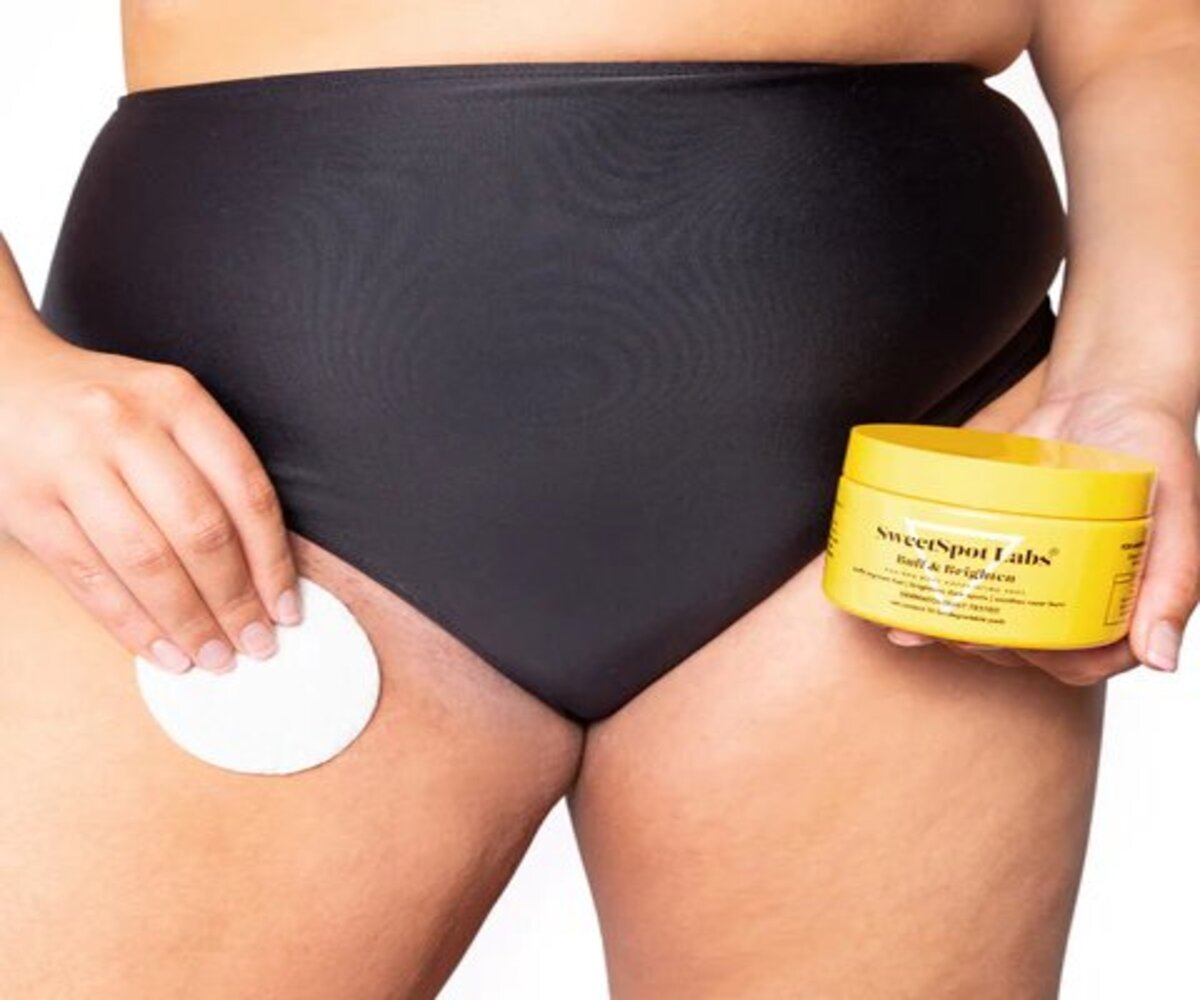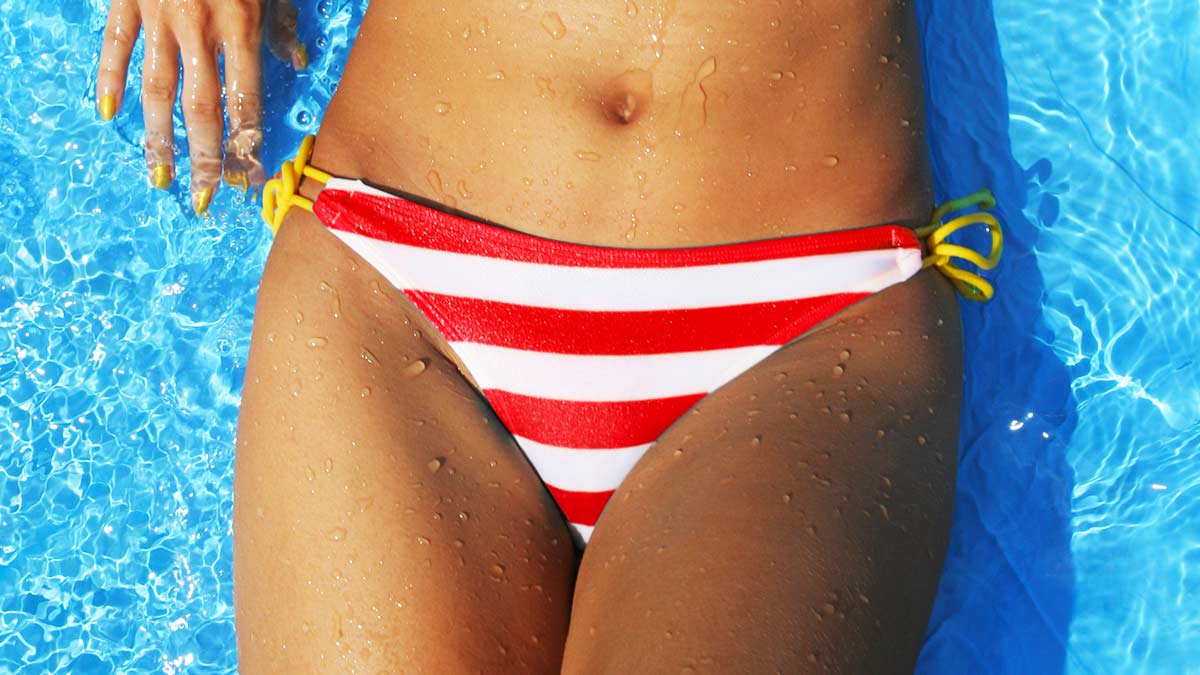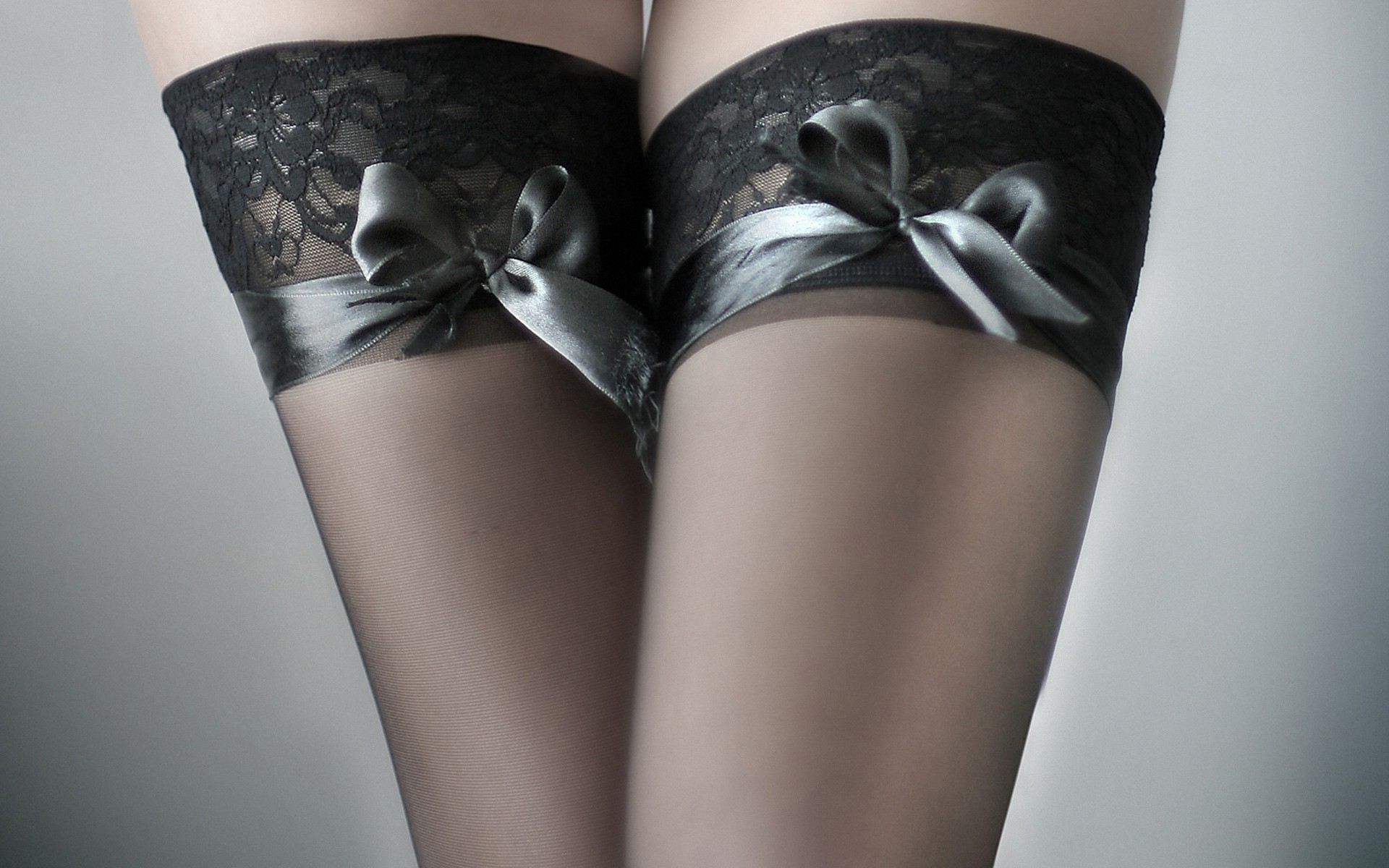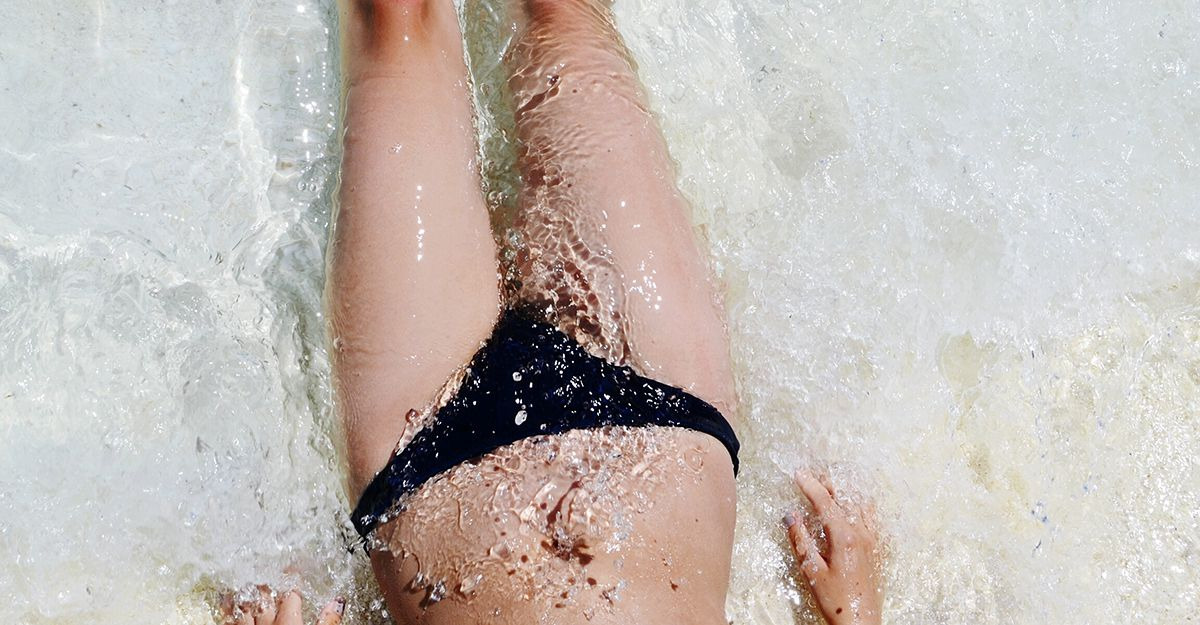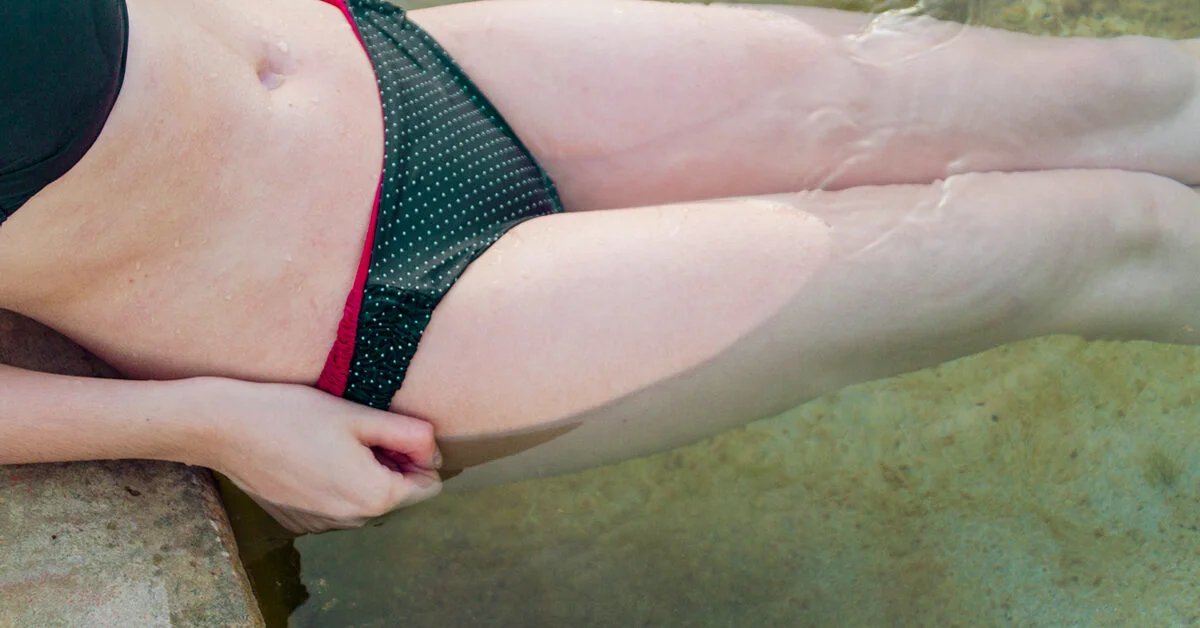Home>How-to Guides>For Women>How To Stop Rash When Shaving Bikini Line
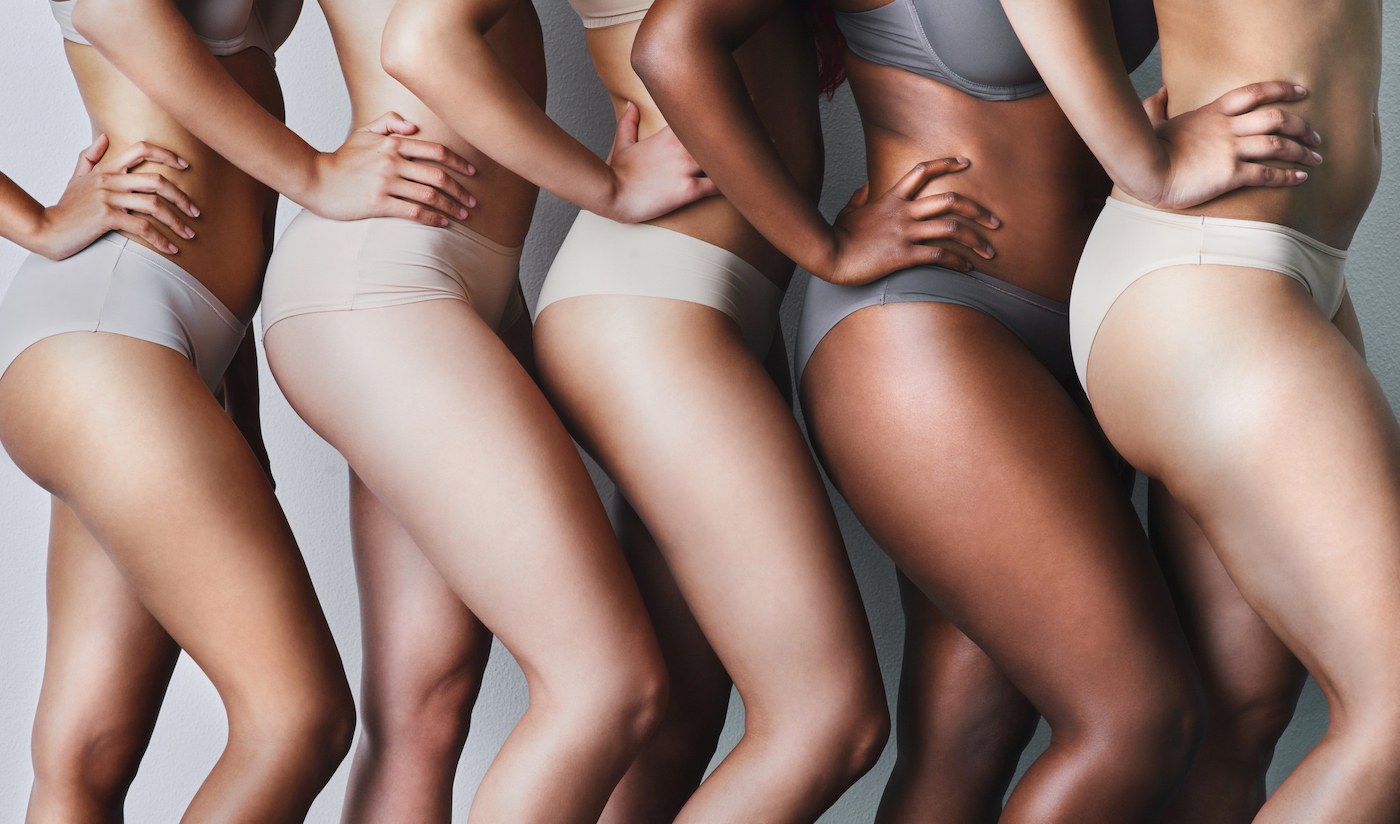

For Women
How To Stop Rash When Shaving Bikini Line
Modified: August 5, 2023
Discover effective tips on how to prevent and soothe bikini line rash when shaving. Essential guide for women to achieve smooth and irritation-free results.
(Many of the links in this article redirect to a specific reviewed product. Your purchase of these products through affiliate links helps to generate commission for Under-tec.com, at no extra cost. Learn more)
Table of Contents
Introduction
Welcome to the world of beauty and fashion! As a woman, taking care of yourself and maintaining a flawless appearance is of utmost importance. One area that often requires extra attention is the bikini line. Whether you’re preparing for a beach vacation or simply want to feel confident in your own skin, it’s essential to have a smooth and rash-free bikini line.
However, many women find themselves dealing with the annoying and sometimes painful issue of bikini line rash. This can be caused by a variety of factors, including improper shaving techniques, sensitive skin, or ingrown hairs. The good news is that with a little bit of knowledge and the right approach, you can prevent or minimize bikini line rash and achieve the silky-smooth results you desire.
In this article, we will explore the causes of bikini line rash, as well as effective strategies for preventing it. From preparing your skin for shaving to choosing the right products and employing proper techniques, we’ll cover all the essentials. We’ll also discuss post-shave care and alternative hair removal methods that can help you maintain a rash-free bikini line.
So, if you’re tired of dealing with uncomfortable and unsightly rashes after shaving your bikini line, keep reading. By the end of this article, you’ll be equipped with the knowledge and tools necessary to prevent and manage bikini line rash, allowing you to confidently show off your flawless figure.
Understanding the Causes of Bikini Line Rash
Before we delve into the preventive measures, it’s important to understand the root causes of bikini line rash. This knowledge will help you identify the specific triggers and make informed decisions regarding your hair removal routine.
One of the primary culprits behind bikini line rash is improper shaving techniques. When you use a dull blade, shave against the hair growth, or apply excessive pressure, you increase the likelihood of irritating your skin. This irritation can lead to redness, itchiness, and even painful bumps.
Sensitive skin is another factor to consider. Some individuals naturally have more delicate skin that reacts more strongly to external stimuli. If you fall into this category, you may experience a higher likelihood of developing a rash after shaving your bikini line.
Ingrown hairs are a common occurrence when shaving the bikini line. When hair follicles become trapped beneath the surface of the skin, they can cause inflammation and lead to the formation of unsightly bumps and rashes. This issue is more prevalent in individuals with curly or coarse hair.
Now that you are aware of the primary causes, it’s important to note that everyone’s skin is unique. Understanding your specific skin type and how it reacts to various stimuli is essential in creating a personalized hair removal routine that minimizes the risk of developing a rash.
In the next sections, we will explore proven strategies and techniques to help you achieve a rash-free bikini line. By following these guidelines, you will be able to enjoy smooth, irritation-free skin all year round.
Preparing Your Skin for Shaving
Properly preparing your skin before shaving is a crucial step in preventing bikini line rash. Taking the time to prepare your skin will not only minimize irritation but also ensure a close and smooth shave. Here are some essential tips to help you get started:
- Exfoliate: Before shaving, exfoliate your bikini area to remove dead skin cells and unclog pores. This not only helps prevent ingrown hairs but also allows for a closer shave. Use a gentle exfoliating scrub or a soft brush to gently massage the area in circular motions.
- Moisten the skin: Wetting the skin before shaving is crucial. It softens the hair, making it easier to cut, and reduces the chances of irritation. Take a warm shower or apply a warm compress to the area for a few minutes before you start shaving.
- Use a quality shaving cream or gel: Applying a generous amount of shaving cream or gel creates a protective barrier between your skin and the razor. Look for products specifically designed for sensitive skin and avoid those with harsh chemicals or fragrances that can potentially irritate your skin.
- Choose the right razor: Invest in a high-quality razor with a sharp blade. Replace the blades regularly to ensure a clean and smooth shave. Avoid using dull blades, as they can tug at the hair and cause irritation. Opt for a razor with multiple blades for a more efficient shave.
- Shave in the direction of hair growth: To minimize irritation and reduce the risk of ingrown hairs, it’s important to shave in the direction that your hair grows. Shaving against the grain increases the likelihood of irritation and can lead to razor bumps or rash.
By following these simple steps, you can create a suitable foundation for a smooth and comfortable shaving experience. Now that your skin is prepared, let’s explore the next phase: choosing the right products for your bikini line.
Choosing the Right Products
When it comes to achieving a rash-free bikini line, selecting the right products is key. Using gentle and appropriate products can significantly minimize skin irritation and promote a smoother shaving experience. Here are some important factors to consider when choosing the right products for your bikini line:
- Shaving Cream or Gel: Look for shaving creams or gels that are specifically formulated for sensitive skin. These products often contain moisturizing ingredients like aloe vera or chamomile, which help soothe the skin and reduce the risk of irritation. Avoid products that contain alcohol or fragrances, as they can be harsh on your skin.
- Aftershave Products: After shaving, it’s important to use an appropriate aftershave product to calm and hydrate the skin. Look for aftershaves that are alcohol-free and enriched with ingredients like witch hazel or tea tree oil, known for their soothing and antibacterial properties. Applying a moisturizer or mild lotion afterward can also help keep your skin hydrated and prevent dryness.
- Pre-Shave Oils: Pre-shave oils can help create a smooth surface for shaving by softening the hair and providing a protective barrier. Look for oils that are non-comedogenic and made with natural ingredients like jojoba or argan oil. Applying a few drops to the bikini area before shaving can make a significant difference in reducing friction and irritation.
- Disposable or Electric Razor: When it comes to choosing a razor, it ultimately depends on your preference and what works best for your skin. Disposable razors are convenient and affordable, but make sure to select ones with multiple blades and a pivoting head to ensure a close and comfortable shave. If you have sensitive skin, an electric razor with adjustable settings and a hypoallergenic foil or blade may be a better option.
- Ingrown Hair Treatments: If you frequently experience ingrown hairs, consider using an ingrown hair treatment or serum. These products usually contain exfoliating ingredients like salicylic acid or glycolic acid, which can help prevent and treat ingrown hairs. Apply the treatment regularly, following the instructions provided.
Remember, everyone’s skin is unique, so it may require some trial and error to find the perfect products that work for you. Pay attention to how your skin reacts to different products and make adjustments as needed. With the right products in hand, you’re ready to explore proper techniques for shaving the bikini line.
Techniques for Shaving the Bikini Line
Shaving the bikini line requires precision and care to minimize the risk of irritation and achieve smooth results. By following proper techniques, you can greatly reduce the chances of developing a rash. Here are some essential tips to consider when shaving your bikini line:
- Trim the hair first: If the hair in the bikini area is longer, consider trimming it to a manageable length before shaving. This helps prevent clogging the razor and allows for a closer shave.
- Keep the skin taut: When shaving, make sure to keep the skin in the bikini area taut. This helps create a smoother surface and reduces the chances of nicks and cuts. Use your free hand to gently pull the skin tight as you shave.
- Shave in small, gentle strokes: Avoid long, sweeping strokes when shaving the bikini line. Instead, use short and gentle strokes in the direction of hair growth. This minimizes the risk of irritation and promotes a closer shave.
- Rinse the razor frequently: Rinse the razor under running water after each stroke to remove any hair or product buildup. This ensures a clean and effective shave.
- Avoid applying too much pressure: Applying excessive pressure while shaving can result in skin irritation and razor burn. Allow the razor to glide gently over the skin without forcing it. A light touch is all you need.
- Rinse with cool water: After shaving, rinse the bikini area with cool water to soothe the skin and close the pores. This helps reduce redness and inflammation.
- Pat dry and avoid rubbing: After rinsing, pat the bikini area dry with a clean towel. Avoid rubbing, as this can irritate the skin. Allow your skin to air dry for a few minutes before applying any post-shave products.
Remember, everyone’s skin is different, so it’s important to listen to your body and adapt these techniques to suit your needs. Take your time and be mindful of your skin’s sensitivity. With the right techniques in place, you can move on to the next crucial step: post-shave care for preventing bikini line rash.
Post-Shave Care for Preventing Rash
Proper post-shave care is essential for preventing bikini line rash and keeping your skin healthy and irritation-free. After shaving the bikini area, follow these important steps to soothe your skin and minimize the risk of developing a rash:
- Rinse with cool water: After shaving, rinse the bikini area with cool water to remove any remaining shaving cream or gel. This helps calm the skin and close the pores, reducing the chances of irritation.
- Apply a soothing aftershave product: Choose an alcohol-free aftershave product or a mild lotion specifically formulated for sensitive skin. Look for ingredients like chamomile, lavender, or aloe vera, known for their calming and soothing properties. Gently apply the product to the shaved area to help hydrate and protect the skin.
- Avoid tight clothing: After shaving, avoid wearing tight-fitting clothing that can rub against the freshly shaved skin. Opt for loose-fitting clothing made from breathable fabrics to allow for proper airflow and prevent friction.
- Avoid touching or scratching: It’s important to resist the urge to touch or scratch the shaved area, as this can further irritate the skin and potentially lead to infection. Be gentle and let your skin heal naturally.
- Moisturize daily: Moisturizing your bikini area daily is essential for maintaining hydrated and healthy skin. Choose a lightweight, non-comedogenic moisturizer and apply it to the shaved area regularly. This helps replenish moisture and keeps the skin smooth and supple.
- Avoid sun exposure: It’s crucial to protect the freshly shaved skin from sun exposure, as it can cause further irritation and increase the risk of developing a rash. Apply a broad-spectrum sunscreen with an SPF of 30 or higher to the bikini area when heading outdoors, and reapply as needed.
- Exfoliate regularly: To prevent ingrown hairs and keep the bikini line smooth, incorporate regular exfoliation into your skincare routine. Use a gentle exfoliating scrub or a soft brush to remove dead skin cells and promote proper hair growth. Exfoliate the area once or twice a week, being careful not to overdo it.
By following these post-shave care tips, you’ll provide your skin with the necessary care and support to prevent rash and irritation. Now, let’s explore some alternative hair removal methods for your bikini line.
Alternative Hair Removal Methods
While shaving is a popular hair removal method for the bikini line, it’s not the only option. If you find that shaving frequently leads to irritation or if you’re simply looking for an alternative, here are some other hair removal methods to consider:
- Waxing: Waxing involves applying hot or cold wax to the bikini area and then pulling it off to remove the hair from the root. This method provides longer-lasting results compared to shaving and can help reduce the frequency of hair removal. However, it’s important to note that waxing can be painful, especially for those with sensitive skin. Consider visiting a professional for a more comfortable and efficient experience.
- Depilatory creams: Depilatory creams, also known as hair removal creams, work by dissolving the hair close to the surface of the skin. These creams are typically applied to the bikini area and left on for a specified amount of time, after which the hair can be easily wiped away. It’s important to choose a depilatory cream that is specifically formulated for sensitive areas and to follow the instructions carefully to avoid skin irritation.
- Laser hair removal: Laser hair removal is a long-term hair reduction method that uses laser technology to target and destroy the hair follicles. While it requires multiple sessions to achieve desired results, this method can provide longer-lasting hair reduction compared to shaving or waxing. Laser hair removal should be performed by a trained professional, and it’s important to discuss your skin type and any potential risks or side effects before proceeding.
- Epilation: Epilation involves using an electronic device with rotating tweezers or discs to pluck out the hair from the root. This method provides longer-lasting results compared to shaving but can be more time-consuming. It’s important to exfoliate the bikini area regularly and choose an epilator that is specifically designed for sensitive areas.
- Laser hair removal: Laser hair removal is a long-term hair reduction method that uses laser technology to target and destroy the hair follicles. While it requires multiple sessions to achieve desired results, this method can provide longer-lasting hair reduction compared to shaving or waxing. Laser hair removal should be performed by a trained professional, and it’s important to discuss your skin type and any potential risks or side effects before proceeding.
- Threading: Threading is an ancient hair removal technique that originated in the Middle East. It involves using a twisted thread to trap and remove hair from the root. Threading is highly precise and is suitable for removing fine hair from the bikini line. It can be done at home or by a professional.
When considering alternative hair removal methods, take into account factors such as your pain tolerance, budget, and desired results. It’s also important to test a small area of your bikini line before proceeding with any new method to ensure compatibility with your skin.
No matter which alternative method you choose, it’s always recommended to seek professional guidance or assistance for the best and safest results. Now that you are aware of alternative hair removal options, you can make an informed decision that suits your preferences and needs.
When to Seek Professional Help
While many individuals can effectively manage their bikini line hair removal at home, there are situations where seeking professional help is necessary or beneficial. Here are some scenarios in which it’s advisable to seek the assistance of a dermatologist or aesthetician:
- Severe or recurring rash: If you consistently experience severe or recurring rashes after shaving your bikini line, it’s important to consult a professional. They can assess your skin and determine the underlying causes of the rash. They may recommend alternative hair removal methods or suggest specific products or treatments to alleviate the issue.
- Ingrown hair complications: Ingrown hairs can be more than just a pesky annoyance. In some cases, they can become infected and lead to painful abscesses or cysts. If you have a persistent ingrown hair that is causing discomfort or seems to be worsening, it’s advisable to seek professional assistance. A dermatologist can provide proper treatment and help prevent future complications.
- Skin sensitivity or allergies: If you have known skin sensitivities or allergies, it’s vital to consult with a professional before trying any new hair removal method or product. They can perform patch tests to determine how your skin will react and provide recommendations tailored to your specific needs.
- Unwanted hair growth or hormonal imbalances: If you’re experiencing excessive or unusual hair growth in your bikini area or suspect a hormonal imbalance, it’s essential to consult with a medical professional, such as a dermatologist or endocrinologist. They can evaluate your symptoms, perform tests if necessary, and guide you towards the most suitable treatment options.
- Desire for long-term hair removal: If you’re looking for a more permanent solution to hair removal, such as laser hair removal or electrolysis, it’s best to consult with a trained professional. They can provide expert advice on the most effective and safe options based on your skin type, hair color, and desired results.
Professional guidance can greatly benefit those who have specific concerns, underlying skin conditions, or a desire for long-term hair removal solutions. By seeking professional help, you can ensure that your bikini line hair removal experience is personalized, effective, and safe.
Conclusion
Maintaining a smooth and rash-free bikini line is an important aspect of personal grooming for many women. By understanding the causes of bikini line rash and implementing proper preventive measures, you can achieve the desired results without the discomfort and irritation. Whether you choose to stick with traditional shaving or explore alternative hair removal methods, following the right techniques and using suitable products is key.
Remember to prepare your skin adequately before shaving by exfoliating and moisturizing. Choose the right products, such as gentle shaving creams or gels, and make sure to use a sharp razor and shave in the direction of hair growth to minimize irritation. Implementing proper post-shave care, including rinsing with cool water, moisturizing, and avoiding tight clothing, will help maintain a healthy bikini line.
If shaving continues to cause recurring rashes or if you have more specific concerns, seeking professional help is always a wise choice. A dermatologist or aesthetician can provide personalized advice, solutions, or alternative hair removal options tailored to your needs.
Remember, everyone’s skin is unique, so it may require some trial and error to find the best approach for your bikini line hair removal routine. Be patient and listen to your body. By combining proper techniques, suitable products, and professional guidance when needed, you can maintain a beautiful and rash-free bikini line with confidence.
